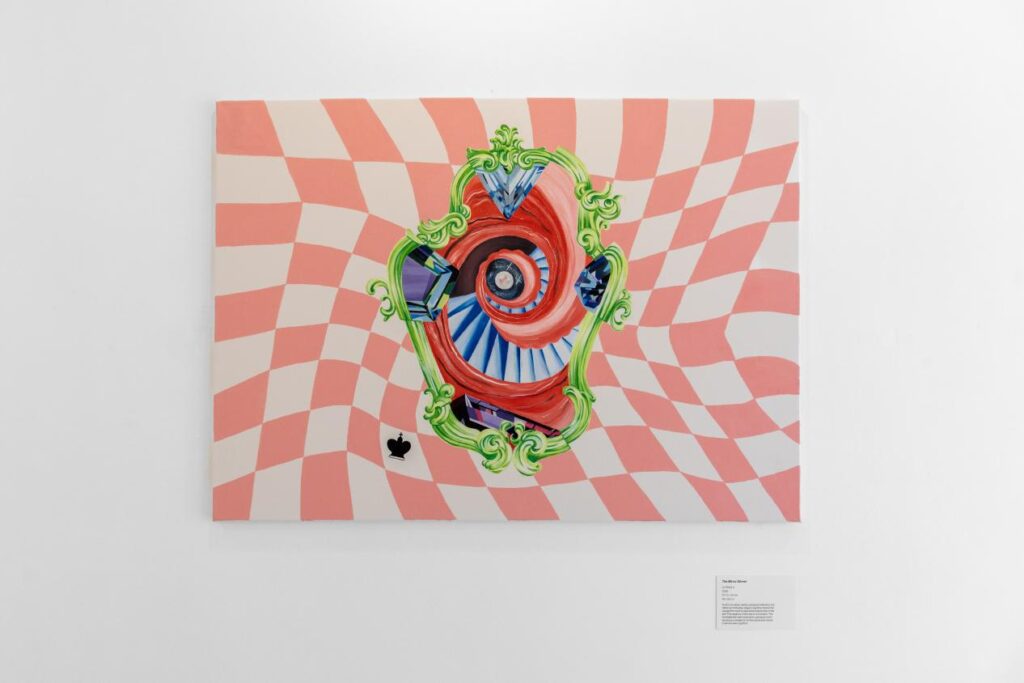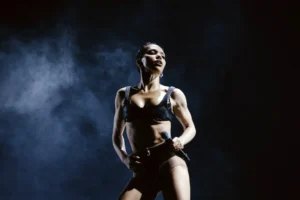Subject Without Anchor: The Unfolding of Lin (Ruki) Li


I first encountered Lin (Ruki) Li’s work in The Multiplicity of ‘I’ , her 2025 solo exhibition at Batsford Gallery. Curated by Xuechen Wang, the show marked Li’s transition from digital illustration into oil painting–an aesthetic and ontological shift that felt less like a break than a molting. Her earlier works had always gestured toward mutability and interiority, but here that
logic was fully staged: not as self-expression, but as self-dissolution. The exhibition unfolded as a slow and careful dismantling of the stable subject, reassembling it through fragments, thresholds, and spatial inversions.

Deleuze’s concept of multiplicity hovered throughout. Not the multiplicity of several identities, but of becoming: identity not as a fixed point but as a process of perpetual differentiation, a series of disorienting passages between zones of intensity. The show’s title–The Multiplicity of ‘I’–signaled this from the outset. The quotation marks around the ‘I’ matter: they undo any assumption of a referent, presenting identity instead as citation, ventriloquism, or copy. Across Wang’s deliberately discontinuous hang, Li’s oil paintings emphasized not unity but slippage: between soft and sharp, familiar and estranged, intimate and uncanny. Domestic objects (pillows, cherries, piercings) drifted through the compositions like mnemonic debris, embracing the lineage of neo-Dadaist practice. Li refuses hierarchy between the banal and the significant.
This turn toward oil has made Li’s work less illustrative, more atmospheric: where her illustrations offered immersive, often whimsical cosmologies, her paintings now stage more ambivalent psychic terrains: layered, open-ended, and conceptually denser. This trajectory reaches an easthetic climax in The Mirror Dinner (2025), shown in Conceptual Erasure. A warped pink-and-cream checkerboard background churns behind a neon green baroque mirror frame, and within it, a vortex of Escheresque stairs spiral inward, blue treads twisting into a fleshy oyster-pink surround, culminating in a single glimmering pearl suspended like a pupil–or an axis mundi.

If earlier works flirted with surrealism through restraint, here Li commits to maximalist rupture. Here, the Deleuzian mirror becomes diagrammatic: not a reflection but a zone of torsion that folds subject and object into an endless feedback loop. The work rejects figuration in favour of symbolic violence and irresolution: the frame does not contain; it mutates. The stairs do not ascend; they swallow. The painting stages becoming not as transformation, but as vertigo both literally and conceptually anchoring the viewer outside of a space usually reserved for recognition.
This is an artist not only evolving, but evolving on her own terms. The Mirror Dinner doesn’t abandon the emotional charge underpinning Li’s image-making–it heightens it, translating affect through disorientation, saturation, and symbolic density. In Deleuzian terms, the work doesn’t depict a subject in flux; it is flux, folded into image. In Li’s hands, this literal image-mirror no longer reflects. It transforms. And in doing so, it invites the viewer to enter that same unstable field of becoming.
The post Subject Without Anchor: The Unfolding of Lin (Ruki) Li appeared first on Our Culture.







